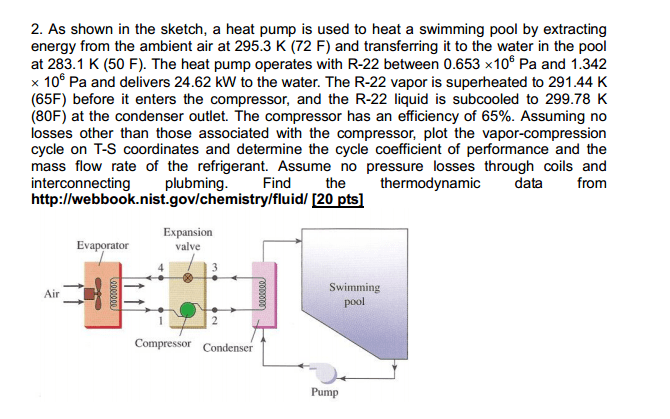CHEN 3101 Chapter Notes - Chapter 10: Subcooling, Reversing Valve, Superheating
Document Summary
Chapter 10: refrigeration and heat pump systems4/3/2015 12:49:00 am. The coefficient of performance (ratio of the refrigeration effect to the net work input) for the above carnot vapor refrigeration cycle is: Vapor-compression refrigeration systems use dry compression in compressors. At steady state, mass and energy rate balance of the evaporator is: = refrigeration capacity (unit: kw, btu/h, or ton of refrigeration - 200. The rate of power input per mass of refrigerant flowing through the compressor is: Rate of heat transfer from refrigerant per unit mass flowing through the condenser is: In the throttling process (expansion of evaporator in the expansion valve): h4 = h3. Coefficient of performance of a vapor-compression refrigeration system is: (^ idealized coefficient, sets upper limit on the performance of the cycle) Ideal vapor-compression cycle: all irreversibilities in heat transfers are ignored. Other than heat transfer, friction also reduces efficiency by causing pressure drops as refrigerant flows through the cycle.



